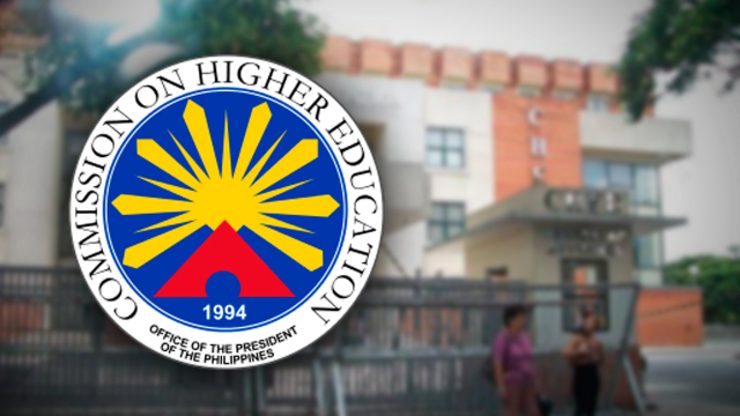SUMMARY
This is AI generated summarization, which may have errors. For context, always refer to the full article.

MANILA, Philippines – The 1987 Constitution clearly defines Filipino as the country’s national language. It also acknowledges that Filipino is evolving, and that it shall be developed and enriched on the basis of other existing dialects and languages.
The Constitution also directs the government to take steps that will initiate and sustain the use of Filipino as the medium of official communication and as a language of instruction in the educational system.
What exactly has been done to carry out this constitutional duty? Let us take a look at some policies currently in place that aid government institutions in upholding and propagating the national language.

1987 Constitution
Sections 6 to 9 of Article XIV outline the main language policy in the country. Section 6 of the Article is already mentioned above.
Section 7 states that for the purposes of communication and instruction, Filipino and, until otherwise provided by law, English are the official languages of the Philippines. In addition, other native Philippine languages – particularly those that are not Tagalog – shall be auxiliary official languages and shall serve as auxiliary medium of instruction in the regions they are spoken.
Section 9 mandates the foundation of a national language commission tasked to undertake, coordinate, and promote researches for the development, propagation, and preservation of Filipino and other languages. Pursuant to this section, the Komisyon ng Wikang Filipino (Commission on the Filipino Language) or KWF was created in 1991.
Executive Order 335
Seeking to further the use of Filipino in official transactions and communications, President Corazon Aquino ordered in 1988 all government departments, bureaus, offices, agencies, and instrumentalities to take steps in using the Filipino language in transactions, communications, and correspondence.
This executive order also assigns personnel in every office who will be in charge of all communication and correspondence written in Filipino.
It also tasks government entities to translate names of offices, divisions of instrumentalities, and even oaths of office into Filipino, and to make proficiency in the use of Filipino in official communications and correspondences as part of personnel training programs.
KWF Resolution 1-92

The KWF passed in 1992 a resolution adopting a working description of Filipino for the purpose of accomplishing Commission tasks. It describes Filipino as the native language spoken and written in the National Capital Region and other urban centers in the Philippines, and is used as the language of communication between ethnic groups.
Filipino, as with any living language, is recognized to be in the process of development via loans from other Philipine languages and non-native varieties of the language for various social situations, among speakers of different backgrounds, and for topics of conversation and scholarly discourse.
Due to the fact that there are 8 major native languages in the Philippines whose speakers outnumber Tagalog users, the notion of a Tagalog-based national language has long been the center of an ongoing argument regarding the national language of the Philippines, with debates dating as far back as 1937 when Tagalog was declared the basis of the national language.
Department of Education, Culture and Sports (DECS) Order 81
In 1987, the DECS released the “Alphabet and a Guide for Spelling in the Filipino Language,” laying down the letters of Filipino alphabet and rules on spelling.
According to the order, the Filipino Alphabet is composed of 28 letters – the original 26 letters of the English alphabet, plus letters Ñ and Ng. The order also details how the letters should be read.
It also discussed grammar and spelling in the Filipino language – rules regarding diction, spelling, translation, how and when to use loanwords, syllables and syllabication of words, and the use of dashes, commas, and accents.
Bilingual Language Policy
The Bilingual Language Policy in the country’s education system seeks to attain Filipino and English competence at a national level through their use as media of instruction at all levels.
The policy aims to propagate Filipino as a language of literacy, to cultivate and develop Filipino as a language of scholarly discourse, and to further its development as a national language. The policy also states that regional dialects shall also be used as auxiliary media of instruction and the initial language for literacy when needed.
DECS earlier issued this policy in 1974, along with DECS order No. 25, which allotted Filipino as the medium of instruction for social sciences, arts, physical education, home economics, practical arts and character education subjects. In turn, English is the medium of instruction for mathematics and science and technology.
With the signing of the 1987 Constitution, Filipino and English are mandated to be used as media for instruction.
College General Education Curriculum’s language policy.

The Commission on Higher Education (CHED) issued in 1994 the New General Educational Curriculum (GEC) under CHED Memorandum Order 59.
The GEC requires Higher Education Institutions (HEIs) to have at least 9 units of Filipino language courses. In addition, to coordinate with the Department of Education (DepEd)’s Bilingual Education Policy, language courses, whether Filipino or English, should be taught in that language. Courses in Humanities and Social Sciences should preferably be taught in Filipino.
Furthermore, at the discretion of HEIs, literature subjects may be taught in Filipino, English, or in any other language so long as there are enough instructional materials, students, and instructors competent in the language. A revised Syllabi of Filipino courses 1, 2, and 3 was issued in 2007 under CMO 54.
The CHED has been under fire by proponents of the Filipino language and language education since CMO No. 20 s. 2013 was issued, which outlined a new revised GEC set for 2018 that contained no Filipino language courses. Filipino language education proponents accused CHED of failing to intellectualize Filipino and that the new GEC would displace thousands of Filipino professors and instructors.
CHED defended its decision by stating that the planned new GEC will work in conjunction with the K-12 program and that many remedial courses, like Filipino and English, will be taught in senior high school years, thereby making them redundant in college. CHED also pointed out that Filipino’s status as a medium of instruction in higher education courses shall not be affected. The CHED also noted that Filipino faculty members aren’t the only ones affected by the new GEC, as literature, mathematics, humanities, and social sciences courses were also removed.
In July 2014, the House of Representatives committee asked the CHED to report how many educators will be affected by the K-12 system as a prerequisite to a proposal to fund displaced education workers.
K-12 program and the Mother Tongue-Based Multilingual Education (MTB MLE)
DepEd launched in 2011 the K-12 program, which became law only in 2013. Along with other curricular and policy reforms introduced, the K-12 program sought to build proficiency through language via MTB MLE, introduced in 2012. The mother tongue or first language refers to languages or dialects first learned by a child and with which the child identifies with.
MTB-MLE aims to develop Filipino and English proficiency by starting basic education with the first language of learners. Starting in kindergarten up to Grade 3, the medium of instruction shall be in the mother tongue of the students. Beginning in Grade 1, Filipino and English will be taught as subject areas.
Come Grades 4 to 6, DepEd shall formulate a mother tongue transition program in which English and Filipino are introduced as media of instruction so that by Junior High School and Senior High School, the two can become the primary languages of instruction.
Initially, there were 12 regional languages under the MTB MLE program: Tagalog, Cebuano, Hiligaynon, Iloko, Bikol, Kapampangan, Maguindanaoan, Meranao, Pangasinense, Bahasa Sug (Tausug), Chabacano and Waray. In July 2013, Ybanag, Ivatan, Sambal, Aklanon, Kinaray-a, Yakan, and Surigaonon were added to the program. – Rappler.com
Sources: 1987 Constitution: Article XIV,Executive Order No. 335 s. 1988, DepEd: DECS order 52 and 54 s. 1987, DECS order 81 s. 1987, NCCA: Language Policies in the Philippines,Commission on the Filipino Language Resolution 1-92, Republic Act No. 10533, Republic Act No. 10533 Implementing Rules and Regulations, About K-12, CHED Memorandum Order No 59 s. 1996, CHED Memorandum Order No 54 s. 2007, CHED Memorandum Order No. 20 s. 2013, CHED Press Statement On The Removal of Filipino and Filipino Teachers from the New General Education Curriculum. Catacataca et al.: Wikang Filipino: Kasaysayan at Pag-Unlad. Commission on the Filipino Language: Patakarang Pangwika: Mga Batas, Kautusan, Pahayag at Kapasyahan Tungkol sa Wikang Filipino.
Add a comment
How does this make you feel?
There are no comments yet. Add your comment to start the conversation.